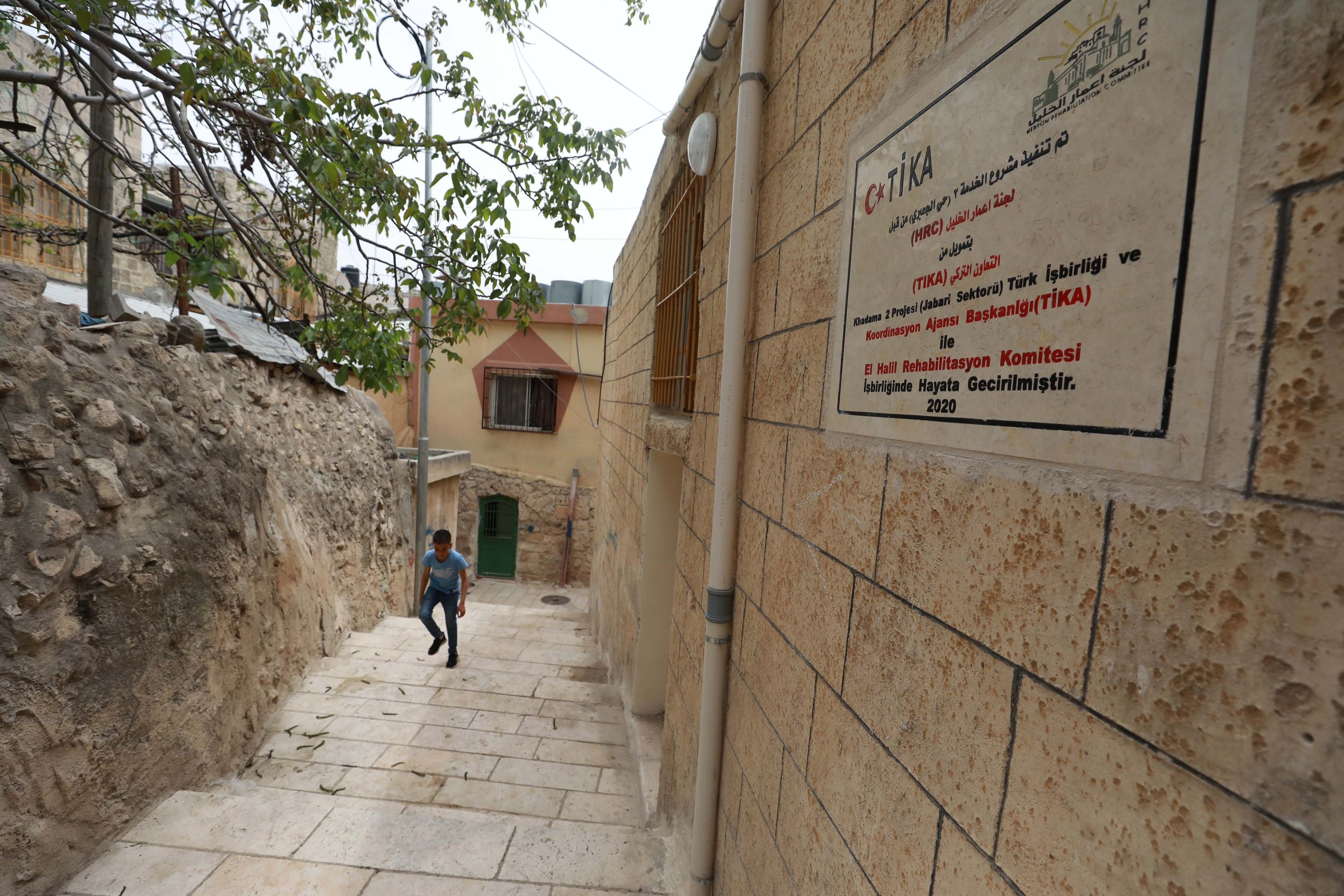© Turkuvaz Haberleşme ve Yayıncılık 2025
Historical houses around Ibrahimi Mosque in the city of Hebron, which is considered the second most sacred place for Muslims in Palestine after Al-Aqsa Mosque, are being restored by the Turkish Cooperation and Coordination Agency (TIKA).
According to the residents whose houses were restored, the project contributes to the return of Palestinians – who fled to different parts of the country or to neighboring countries because of Israel's repressive policy and harassment – to their houses in Hebron.
The restoration of historical houses in the Old City, most of which date back to the Ottoman, Ayyubid and Mamluk periods, is financed by TIKA and implemented by the Hebron Rehabilitation Committee.

More than 30 houses were restored in three of the four phases of the project, which started in 2019 and continues despite the challenges brought on by COVID-19.
"We specifically selected this area adjacent to Ibrahimi Mosque to boost the morale of the people living in these houses and to preserve the architectural heritage of the buildings. At the same time, we maintain them periodically," said Imad Hamdan, manager of the Hebron Rehabilitation Committee in the occupied West Bank.
According to Hamdan, most of the houses in the region have been abandoned due to harassment by Israeli settlers. New families are brought in after the original residents leave, however, many Palestinian homeowners are returning after the restoration.
"In some cases where homeowners cannot return, the Rehabilitation Committee brings families to the houses without any charge. In this way, since 1996, about 10,000 Palestinians have returned to some 2,000 restored homes."
Many of the projects carried out to maintain the Palestinian population in the region have been stalled due to Israel's tactics to stop the work. According to Hamdan, Israel uses methods such as "imposing a work ban, detaining workers, not allowing the entry of restoration materials" in order to prevent the work from being carried out.
The mayor of Hebron, Yousef al-Jabari, told Anadolu Agency (AA) that the Old City has witnessed Israel's violations against Palestinians and Ibrahimi Mosque for nearly 20 years. Al-Jabari explained that many tradespeople had to close their shops due to the unlawful practices that emerged as a result of the dozens of Israeli military checkpoints established in the town.
The mayor said that the population of the town, which was approximately 400, 20 years ago, has now risen to 5,000, with the efforts of the Hebron Rehabilitation Committee and the municipality.
"There are hundreds of shops that have been closed and cannot be opened due to military instructions given by Israel as well as the policies implemented by Israel," he said.
The project contributes to the preservation of buildings and the preservation of cultural heritage in Hebron, a highly critical region due to its historical and political importance.
The Hebron Protocol was signed on Jan. 15, 1997, for the redeployment of Israeli forces in Hebron.
In the protocol, in which Hebron was divided into the areas "H1" and "H2," it was determined that the region called "H1" constituting 80% of the city would be under Palestinian control.
On the other hand, in the region called H2, comprising Ibrahimi Mosque and the Old City where the mosque is located, the civil administration belongs to the Palestinian Authority, while the security is under Israel's control.
The project of TIKA and the Hebron Rehabilitation Committee covers the H2 region, where Israel frequently occupied and seized various pieces of land.
According to a report published by an office affiliated with the Palestine Liberation Organization (PLO) in 2019, the Israeli government seized approximately 1,500 acres of land in the city of Dura, south of Hebron. Around 600 Jewish settlers living in the Old City area in the city of Hebron, which is one of the largest cities in Palestine in terms of land area and population, were protected by 1,500 Israeli soldiers.
